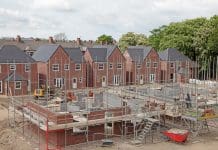The Department for Communities and Local Government say there are over 200,000 empty homes in the UK totalling £43 billion
Five months on from National Empty Homes week, new statistics show empty homes are still a problem in many areas. While the statistics show a significant long-term downward trend in many areas since 2006, they also show that many areas have seen a significant rise in the last year.
The drive to build new affordable housing has left a void in the housing market where long-term empty properties are seen as less attractive, and as a result remain vacant. Critics of the government’s strategy say local councils need to do more to tackle the problem, and buying long-term unoccupied houses to be converted for rent or sale to those in need is the best option.
The tides have turned in London
London has the highest levels of unoccupied housing which amounts to 19,845 homes sitting idle for over six months in 2016. This totals an estimated £9.4 billion worth of property. The report has highlighted a trend away from the most deprived areas having the highest levels of unoccupied housing, to the richest.
For example, Kensington & Chelsea have London’s highest number of long-term vacant homes with 1,399 empty, a rise of 259 since 2006, compared to Lambeth which has experienced a drop of 2061 empty homes within in the same time period.

Image source: Towergate Insurance
Birmingham follows a similar pattern to London with 4,397 properties vacant, a rise of 13% in 12 months. Bradford has the second highest figure at 3,944, down 5%, followed by Liverpool on 3,449, up 5%. Unoccupancy levels have reduced in Manchester to the lowest levels in over a decade to only 1,365, from 11,062 in 2006.
Dan Gandesha, CEO of Property Partner, comments: “These figures lay bare the huge amount of housing stock lying empty across the country.
“Councils have had the power to apply to seize empty homes since 2006 and huge advances have been made over the last ten years. Our research shows there is some great work being done in areas where the number of empty homes is coming down rapidly, such as Blackpool and Harrow.
“Dealing with this issue represents a fantastic opportunity to free up supply and help alleviate the scarcity of affordable housing nationally.
“We’d like to see the trend of the last decade continue, particularly where prices and demand are highest. That’s why it is a concern that in London 14 of 33 boroughs saw an increase in empty homes compared with the previous year.
“Tackling empty homes is one of the ways Britain can fix its broken housing market.”













